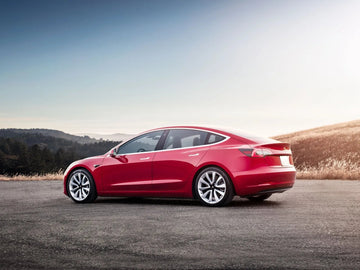Tesla is on the brink of another manufacturing breakthrough, and it's poised to take efficient production to a whole new level, according to a recent report. Building on its groundbreaking casting technique, which has already disrupted the automotive industry, Tesla is now setting its sights on even larger giga-casting machines with clamping power exceeding 16,000 tons.
For years, Tesla has employed casting to streamline manufacturing, enhance vehicle engineering and safety, and fundamentally change the way cars are constructed. The Model Y, in particular, marked a significant milestone in the evolution of car manufacturing, and teardowns of the all-electric crossover showcased Tesla's strides in manufacturing techniques.
However, a recent Reuters report has revealed that Tesla is ready to push the envelope further. Drawing on insights from "five people familiar with the move," the report indicates that Tesla is actively exploring the installation of massive giga-casting machines, which would necessitate not only new equipment but also sprawling factories to accommodate them.
These colossal machines would be tasked with producing a single, substantial frame that consolidates the front and rear sections along with the midsection where the battery is housed. This particular design is earmarked for Tesla's upcoming $25,000 model, expected to hit the market by the middle of the decade.
In a bid to facilitate a seamless manufacturing process with the flexibility to make slight adjustments during the design phase, Tesla is steering clear of conventional techniques. Large casting structures, while efficient, are seen as "prohibitive" due to their limited adaptability. To address this challenge, Tesla is thinking innovatively by collaborating with firms capable of producing test molds using industrial sand and 3D printers.
The primary advantage of this approach isn't just the ability to fine-tune prototypes rapidly; it's also about cost-efficiency. Creating molds with this method costs only 3% of what it would take with a metal prototype.
However, there are drawbacks to consider. The industrial sand and metal molds may not provide the same level of crashworthiness that Tesla demands from its vehicles, as the behavior of aluminum alloys, integral to this new technique, differs in sand and metal molds. Casting specialists have tackled this issue by refining the molten alloy cooling process and implementing post-production heat treatment.
It's important to note that Tesla has not yet made a final decision on this manufacturing technique. The primary challenge lies in the need for more extensive factory facilities, a hurdle that Tesla is already addressing with plans for a factory in Mexico and potential factories on the horizon in India.
As Tesla continues to push the boundaries of innovation, the automotive world eagerly awaits the outcome of this bold manufacturing experiment. Stay tuned for more updates on Tesla's journey to revolutionize the industry once again. 🚀🏭 #TeslaManufacturing #GigaCasting #InnovationInProgress #AutomotiveRevolution
Tesery, dedicated to providing quality products and services to Tesla owners. The most trusted Tesla accessories shop and supplier, the choice of over 28,000 Tesla owners!














































